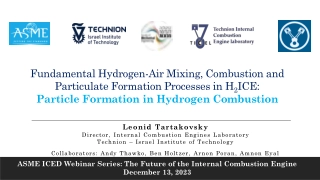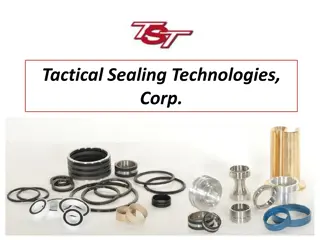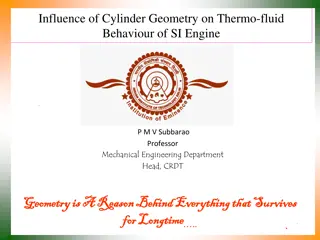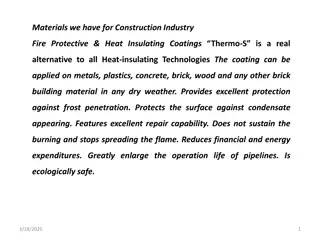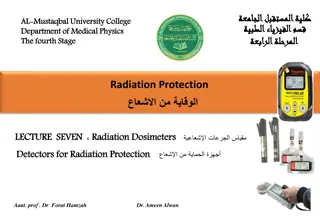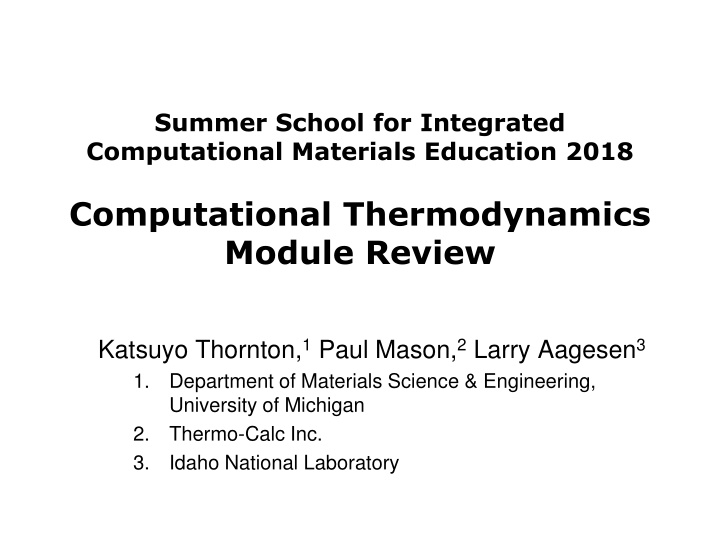
Computational Thermodynamics Module Review - Summer School 2018
Explore the Computational Thermodynamics Module at the Summer School for Integrated Computational Materials Education in 2018. Dive deep into thermodynamic concepts, phase equilibrium, and the application of computational tools in real-world engineering problems. Gain insights into Gibbs Free Energy, Phase Diagrams, and Chemical Equilibrium. Join experts in the field for an enriching learning experience.
Download Presentation

Please find below an Image/Link to download the presentation.
The content on the website is provided AS IS for your information and personal use only. It may not be sold, licensed, or shared on other websites without obtaining consent from the author. If you encounter any issues during the download, it is possible that the publisher has removed the file from their server.
You are allowed to download the files provided on this website for personal or commercial use, subject to the condition that they are used lawfully. All files are the property of their respective owners.
The content on the website is provided AS IS for your information and personal use only. It may not be sold, licensed, or shared on other websites without obtaining consent from the author.
E N D
Presentation Transcript
Summer School for Integrated Computational Materials Education 2018 Computational Thermodynamics Module Review Katsuyo Thornton,1Paul Mason,2Larry Aagesen3 1. Department of Materials Science & Engineering, University of Michigan 2. Thermo-Calc Inc. 3. Idaho National Laboratory
Purposes of Module Develop deeper understanding of thermodynamic concepts through hands-on exercises Learn how computational tools can be used to determine phase equilibrium in multicomponent systems Demonstrate the importance of thermodynamics through an application of thermodynamic concepts to a real-world engineering problem. Summer School for Integrated Computational Materials Education Ann Arbor, MI, June 4-15, 2018 2
Concepts Illustrated Through Module 1. Gibbs Free Energy 2. Phase Equilibrium 3. Phase Diagram 4. Isopleths 5. Computational Thermodynamics & CALPHAD Method Summer School for Integrated Computational Materials Education Ann Arbor, MI, June 4-15, 2018 3
Gibbs Free Energy Gibbs energy is the state function minimized under constant T and P at the state of equilibrium. Consistent with many experimental systems. For a single component system: G U+PV -TS For a mixture: i G =U+PV -TS = mini Summer School for Integrated Computational Materials Education Ann Arbor, MI, June 4-15, 2018 4
Gibbs Free Energy of Mixture dG =-SdT +VdP + G n1 dn1+ G dn2+ G G nN dn3+...+ dnN n2 n3 N midni dG =-SdT +VdP+ i=1 N =number of components mi= G =chemical potential of species i ni T,P,nj i Summer School for Integrated Computational Materials Education Ann Arbor, MI, June 4-15, 2018 5
Chemical Equilibrium When chemical potential of each species is constant throughout, the system is in chemical equilibrium In single phase material, the chemical potential is constant when the concentration of all species are constant. When multiple phases are present, the equilibrium concentration must be constant in each phase, but they can be different from one phase to another so that the chemical potential of each species are constant. Summer School for Integrated Computational Materials Education Ann Arbor, MI, June 4-15, 2018 6
Chemical Equilibrium in Multiphase Systems: Binary Ag-Cu system Summer School for Integrated Computational Materials Education Ann Arbor, MI, June 4-15, 2018 7
Chemical Equilibrium in Multiphase Systems: Binary Ag-Cu system Summer School for Integrated Computational Materials Education Ann Arbor, MI, June 4-15, 2018 8
Chemical Equilibrium in Multiphase Systems: Binary Ag-Cu system Summer School for Integrated Computational Materials Education Ann Arbor, MI, June 4-15, 2018 9
Chemical Equilibrium in Multiphase Systems: Many Components The concept is the same, but it gets complicated very quickly! Computation is required! Al-Fe-Mn Isothermal section at T=1273 Also see http://www.youtube.com/watch?v=yzhVomAdetM Summer School for Integrated Computational Materials Education Ann Arbor, MI, June 4-15, 2018 10
Computational Thermodynamics Computational Thermodynamics is an interdisciplinary science as thermodynamics is involved in many applied sciences. It makes use of computer software and assessed thermodynamic databases to perform realistic calculations of thermodynamic properties of multicomponent system. Key: The development of consistent databases where each phase is described separately using models based on physical principles and parameters assessed from experimental data. Summer School for Integrated Computational Materials Education Ann Arbor, MI, June 4-15, 2018 11
CALPHAD Methodology Fundamental Theory Empirical Rules Experimental Data Models ( m T G ) i , , P x Experimental Determination Ab Initio Calculation Parameter Optimization Database Thermodynamic Properties Equilibrium States Phase Diagrams 12
Isopleth In thermodynamics, isopleth lines refer to lines indicating constant mole fraction. In order to visualize ternary and many component phase diagrams, it is helpful to plot a two-dimensional figures with other variables fixed. They are called mapped diagrams. In a ternary system, an isoplethal map provides a vertical cross section of the 3D phase diagram. Summer School for Integrated Computational Materials Education Ann Arbor, MI, June 4-15, 2018 13
Example: Fe-1.5Mn-0.3Si-0.1V-C HSLA Steel Summer School for Integrated Computational Materials Education Ann Arbor, MI, June 4-15, 2018 14



